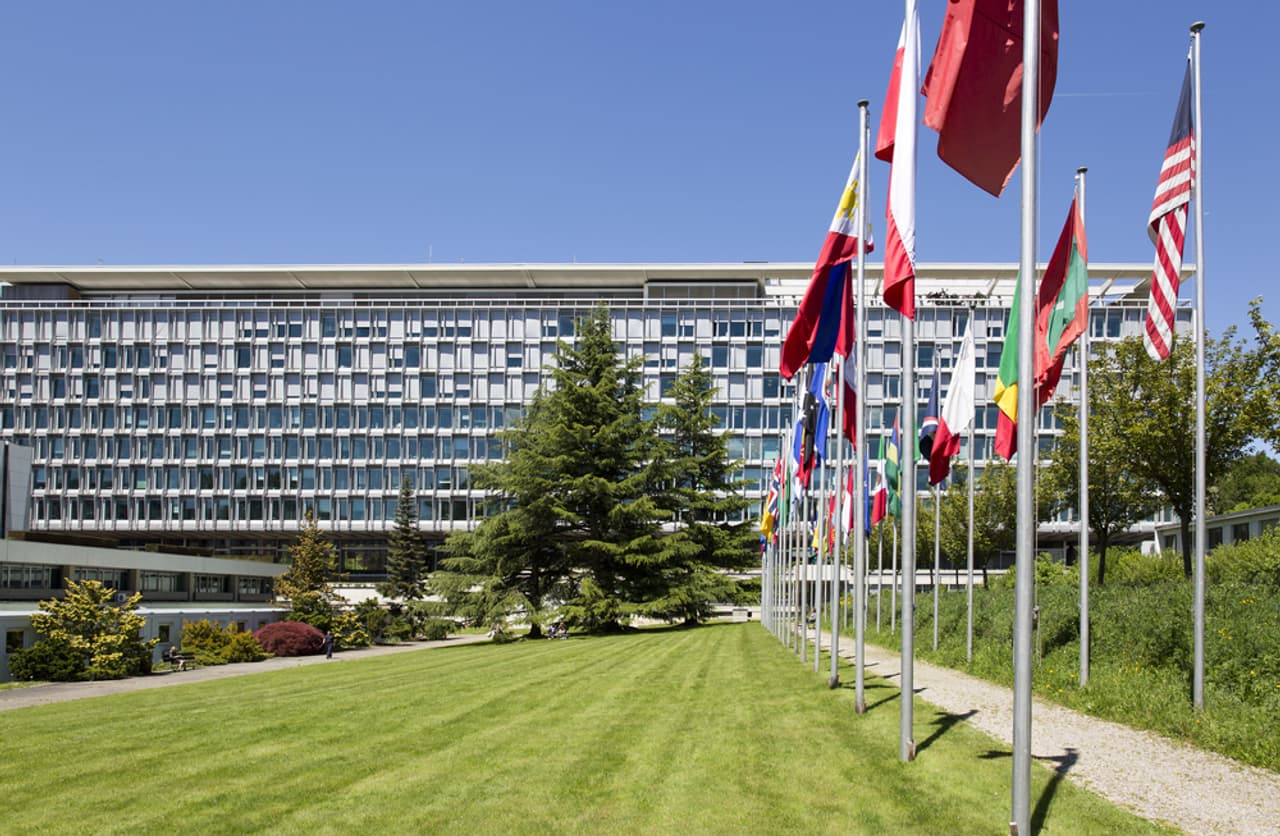
Get the data: Rising sales of critically important antibiotics
World Health Organization headquarters in Geneva
Not all antibiotics are equal. According to the World Health Organization, some classes of antibiotic are so medically important they’ve labelled them “critically important antibiotics”.
If an antibiotic is critically important it means it’s the only way, or one of few alternatives, of treating a serious infectious disease in humans. On top of that, it’s also an antibiotic that treats either diseases humans can catch from non-human sources (animals, water, food or the environment), or diseases that can develop resistance to antibiotics in non-human sources and then pass that resistance onto humans.
Increasing resistance to critically important antibiotics makes it much harder to treat people with life threatening infections. If you have a disease which can only be treated with one antibiotic, and the bacteria causing your disease are resistant to that antibiotic, the drugs literally won’t work.
The more we use antibiotics, the more resistance spreads. The emergence of strains of infectious diseases that are resistant to all or nearly all antibiotics – dubbed ‘superbugs’ – was succinctly described by the WHO in 2013: “The end of the age of the miracle drug may indeed be upon us”.
The Veterinary Medicines Directorate publishes a yearly report on sales of antibiotics for use in animals. The data is far from perfect, but it’s the best we’ve got.
Total antibiotic sales
Total antibiotic sales can be measured in two ways. The first is the total weight of all antibiotics sold, not accounting for factors like livestock populations that change year on year. The second way takes this into account and is used by the VMD because it allows an analysis trends over the years, which measuring purely by weight sold does not.
The VMD does this by taking the total weight of active ingredients sold each year in the UK (429 tonnes in 2014) and, using information like the size of each livestock population and the typical weight of an animal on being dosed with each antibiotic, working out an estimated weight at treatment for each species. This adjustment is called the population correction unit (PCU) and is the standard technical unit of measurement used by EU countries. It results in a unit called milligrams per PCU and lets us compare yearly livestock sales of antibiotic in real terms.
Total antibiotic sales measured in mg/PCU have remained fairly stable in the UK. The most recent data for 2014 is 57 mg/PCU, which is the same as it was in 2009. 2010 was the highest year for the last seven years at 60 mg/PCU.
However we only have data in mg/PCU from 2008. To look at antibiotic sales over a longer time period, we need to use the first, less effective way of measuring – the tonnes of active ingredient sold per year. It is less useful as a comparison because it doesn’t account for factors like changing livestock populations, but it does allow us to look at sales from 1993 to 2014 and see that the total tonnage of active ingredients sold each year is relatively stable.
Macrolides
This class of antibiotic is one of the highest priority critically important antibiotics, according to the WHO. This is because they are one of the few drugs that can be used to treat serious campylobacter infections, especially in children because the other type of antibiotics used, quinolones, aren’t recommended for use in children. Campylobacter is the most common cause of food poisoning in the UK, causing an estimated 280,000 cases a year and 100 deaths.
Sales of macrolides for use in food animals in mg/PCU increased from 5.73 in 2008 to 6.94 in 2013.
Fluoroquinolones
Fluoroquinolones are also classed as one of the highest priority critically important antibiotics by the WHO. Resistance to fluoroquinolones can develop in salmonella and E.coli bacteria in animals, while this antibiotic is one of few available treatments for serious salmonella and E.coli infections in humans. The WHO says the number of serious cases of these food poisoning bugs in humans is “substantial”.
Sales of fluoroquinolones for use in food animals in mg/PCU increased from 0.27 in 2008 to 0.34 in 2014.
3rd and 4th generation cephalosporins
These classes are another considered by the WHO to be one of the highest priority critically important antibiotics. Resistance can develop to these drugs in animals, and they are one of a limited number of available treatments for serious salmonella and E.coli infections – especially in children.
Sales of 3rd and 4th generation cephalosporins for use in food animals in mg/PCU increased from 0.13 in 2008 to 0.20 in 2014.
Aminoglycosides
In 2011, on its third publication of a list of what it considers to be the most important antibiotics, the WHO moved aminoglycosides up a category from “highly important” to “critically important”. This was because it’s the only available drug for some diseases, like endocarditis – a rare and potentially fatal type of heart infection. It’s also one of few antibiotics that can be used to treat multi-drug resistant tuberculosis.
Unfortunately the VMD doesn’t publish data on sales of aminoglycosides in mg/PCU, so we have to use the total sales in tonnes of active ingredients.
Using this measurement, total sales aminoglycosides in tonnes of active ingredient went up from 19 tonnes in 2009 to 22 tonnes in 2014.
- All data is taken from the VMD UK Veterinary Antibiotic Resistance and Sales Surveillance (VARSS) reports published in 2014 and 2015. The WHO most recent list of critically important antibiotics was published in 2011 and can be found here.
Do you have a tip or story about antimicrobial resistance? Contact one of our reporters:
Andrew Wasley on [email protected] or
Victoria Parsons on [email protected]
Follow Victoria Parsons on Twitter. Read about the Drug Resistance project here and join our mailing list here.


